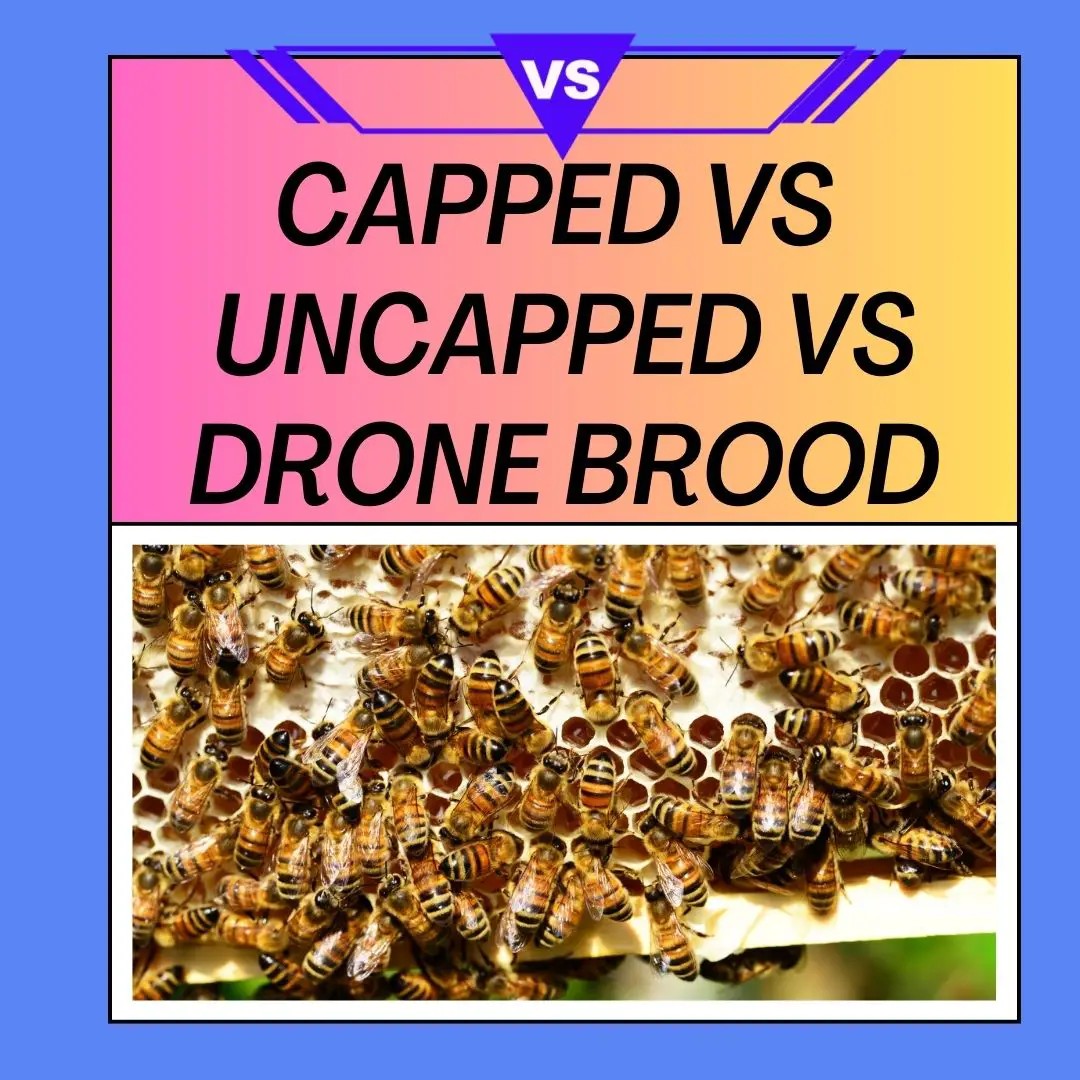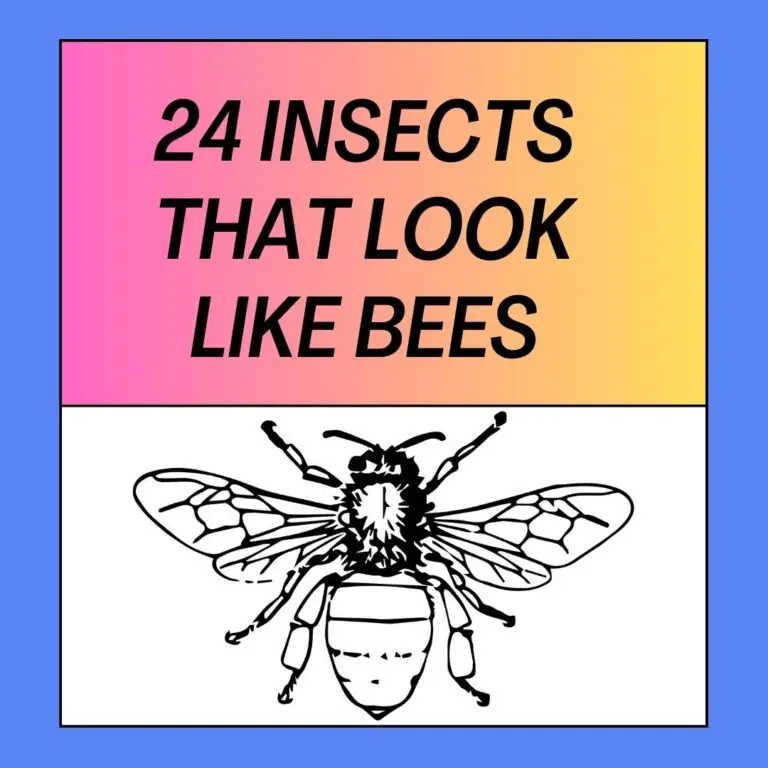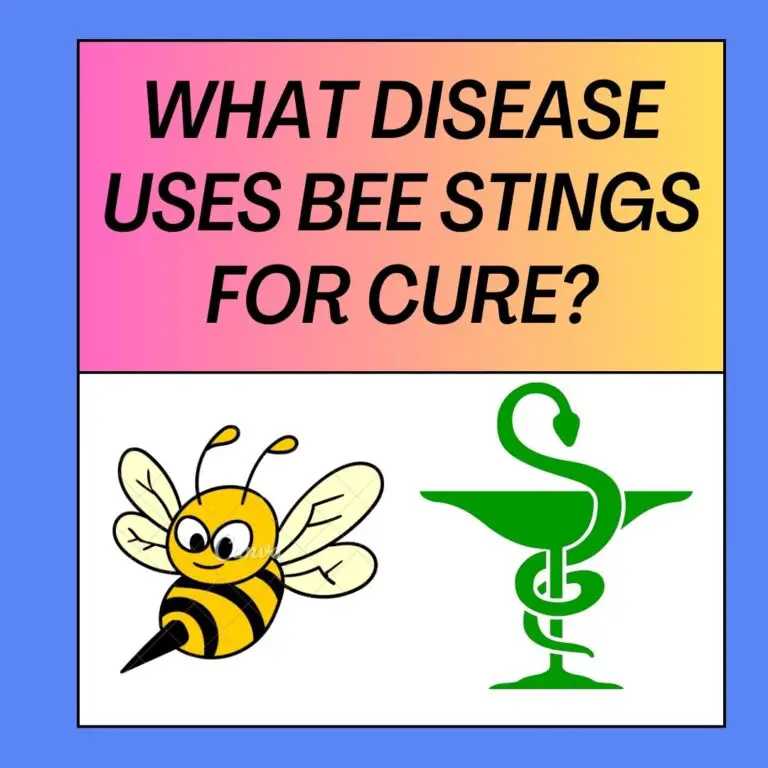
Capped honey and capped brood are distinct structures found within a honeybee hive, each serving different purposes and stages of the bee colony’s life cycle. Here’s an explanation of the differences between capped honey and capped brood:
Capped Honey:
- Formation: Capped honey refers to the cells in a honeycomb that have been filled with and sealed by worker bees to store honey. These cells are often found in frames or sections of the hive.
- Contents: Under the wax caps of capped honey cells, you’ll find mature, ripened honey. Bees transform nectar into honey through a process that involves dehydration and enzymatic changes. The sealed caps preserve the honey for future use as a food source.
- Appearance: Capped honey cells have a distinct appearance, with wax caps that are usually lighter in color compared to the rest of the comb. These caps are often flat and even.
- Usage: Capped honey is a vital food source for honeybee colonies, especially during times of scarcity, such as winter or periods when nectar flow is limited.
- Harvesting: Beekeepers can harvest capped honey frames or sections to collect honey for human consumption.
Capped Brood:
- Formation: Capped brood refers to the cells in the honeycomb where worker bees lay eggs, which subsequently develop into bee larvae and pupae. These cells are also sealed with wax caps, but they serve a different purpose than capped honey.
- Contents: Under the wax caps of capped brood cells, you’ll find developing bee larvae. These larvae progress through stages of growth, eventually pupating and emerging as adult bees.
- Appearance: Capped brood cells can have a slightly different appearance compared to capped honey cells. They are often slightly raised, with a more convex shape, due to the developing bee inside.
- Usage: Capped brood cells play a crucial role in the expansion and maintenance of the bee colony. They house the next generation of worker bees, drones (male bees), and future queens.
- Life Cycle: Worker bees cap brood cells after the eggs are laid by the queen bee. The developing bee undergoes complete metamorphosis inside the cell, transitioning from egg to larva to pupa before emerging as an adult bee.
Capped Honey Vs Uncapped Honey Vs Drone Brood
“Capped honey,” “uncapped honey,” and “drone brood” are distinct components within a beehive, each serving different purposes in the honeybee colony’s life cycle. Here’s a comparison of the differences between capped honey, uncapped honey, and drone brood:
Capped Honey:
- Formation: Capped honey refers to matured honey that has been sealed with beeswax caps by worker bees. This sealing process occurs when honey reaches the appropriate moisture content, indicating that it’s ready for long-term storage.
- Contents: Under the beeswax caps of capped honey cells, you’ll find fully ripened and dehydrated honey. This honey is preserved and stored for the colony’s future consumption, particularly during times of scarcity or winter.
- Usage: Capped honey serves as a primary food source for honeybee colonies. It provides nourishment to worker bees, drones, and the queen bee, as well as sustenance during periods when nectar is scarce.
- Harvesting: Beekeepers harvest capped honey frames from the beehive for human consumption once the honey is fully matured and capped. The caps are removed, and the honey is extracted.
Uncapped Honey:
- Formation: Uncapped honey, as the name suggests, refers to honey that has not yet been sealed with beeswax caps. It is in the process of maturing and drying to the appropriate moisture content for long-term storage.
- Contents: Under the uncapped cells, you’ll find honey that may still contain slightly higher moisture levels compared to capped honey. Worker bees continue to fan and dehydrate this honey until it reaches the desired moisture content.
- Usage: Uncapped honey is in the process of ripening and may not be ready for long-term storage. While some uncapped cells may be consumed by the bees, others may be left open for further drying.
- Monitoring: Beekeepers closely monitor uncapped honey to ensure it reaches the right moisture level before considering it fully matured. Beeswax caps are added once the honey is ready.
Drone Brood:
- Formation: Drone brood refers to the capped cells within the honeycomb that house developing drone bees. Drones are male bees with larger bodies and are reared for the purpose of mating with virgin queens.
- Contents: Under the wax caps of drone brood cells, you’ll find developing drone bee larvae and pupae. These bees undergo complete metamorphosis, transitioning from eggs to larvae to pupae before emerging as adult drones.
- Appearance: Drone brood cells are typically larger and more rounded compared to worker brood cells. This is because drones are larger than worker bees.
- Purpose: Drone brood cells play a role in the colony’s reproduction by producing male bees (drones) for mating with queens from other colonies.
- Lifecycle: Drones emerge from their cells as adults and are involved in mating flights. Once they have mated, drones do not engage in typical hive activities and are eventually expelled from the colony by worker bees.
What is the difference between brood and honey frames?
Brood and honey frames are specific types of frames used within a beehive, and they differ in design and purpose. Here’s a comparison of the differences between brood frames and honey frames.
Brood Frames:
- Purpose: Brood frames are designed for the rearing of bee brood, which includes eggs, larvae, and pupae. They provide a suitable environment for the development of the next generation of bees.
- Cell Size: Brood frames typically have larger cells compared to honey frames. The larger cells are well-suited for accommodating the growing bee larvae and pupae.
- Comb Pattern: The comb pattern on brood frames may appear irregular and is adapted for brood rearing. The cells may have a mix of worker brood (smaller cells), drone brood (larger cells), and pollen storage cells.
- Darkened Cells: Over time, brood cells may darken due to the pupation process and the repeated use of cells for brood rearing.
- Capping: Brood frames do not have a wax capping over the cells because the cells need to remain open for the emergence of adult bees.
Honey Frames:
- Purpose: Honey frames are specifically designed for the storage of honey by worker bees. They serve as storage units for surplus honey produced by the colony.
- Cell Size: Honey frames have smaller cells, often uniform in size, compared to brood frames. The smaller cell size allows for efficient storage of honey.
- Comb Pattern: The comb pattern on honey frames is more regular and uniform. The cells are adapted for honey storage, and there are no irregularities in cell size.
- Capping: Honey frames have cells that are capped with beeswax once the honey is matured. Capping seals the honey cells, preserving the honey until it’s ready for harvesting.
- Appearance: Honey frames tend to have a neater and more uniform appearance due to the consistent cell size and the presence of wax cappings.
What is the difference between a brood box and a honey box?
A brood box and a honey box are two distinct components within a beehive, each serving specific functions in managing a honeybee colony. Here’s a comparison of the differences between a brood box and a honey box:
Brood Box:
- Function: The brood box, also known as a brood chamber or deep box, is the lower section of the beehive and is primarily dedicated to housing the bee colony’s brood (eggs, larvae, and pupae) and the queen bee.
- Brood Rearing: This is where the queen bee lays her eggs, and the colony rears and nurtures the next generation of worker bees, drones (male bees), and future queens. Worker bees create a comb pattern within the brood box where they store pollen and nectar for feeding the brood.
- Size: Brood boxes are typically deeper than honey boxes and can accommodate larger frames. Commonly used sizes include deep Langstroth boxes or equivalent dimensions in other hive styles.
- Brood Frames: Inside the brood box, frames contain wax foundation sheets for bees to build comb. These frames are used for brood rearing and pollen and nectar storage.
- Queen Excluder: In some hive setups, a queen excluder may be placed between the brood box and honey boxes to prevent the queen from laying eggs in the honey supers (boxes), ensuring pure honey storage.
- Protection: The brood box is where the colony maintains its core population and stores resources for survival and growth. It is well-protected and maintained by worker bees.
Honey Box (Honey Supers):
- Function: Honey boxes, also called honey supers, are the upper sections of the beehive and are dedicated to the storage of surplus honey that the colony produces beyond its immediate needs.
- Honey Storage: Worker bees fill the frames in honey boxes with nectar gathered from foraging. They transform the nectar into honey through a process of dehydration and enzymatic changes. Once the honey is matured, the cells are capped with beeswax.
- Size: Honey boxes are typically shallower than brood boxes and contain frames specifically designed for honey storage. Commonly used sizes include medium or shallow Langstroth boxes or equivalent dimensions in other hive styles.
- Harvesting: Beekeepers harvest honey from the honey boxes once the cells are capped and the honey is mature. Frames are removed, and the honey is extracted for human consumption.
- Minimal Brood: Although worker bees may occasionally store some pollen and nectar in honey boxes, the primary purpose is honey storage, and they contain minimal or no brood.
- Surplus Storage: Honey boxes are added to the hive when there is an abundance of nectar flow, typically during the flowering season. They provide additional storage space for surplus honey production.






